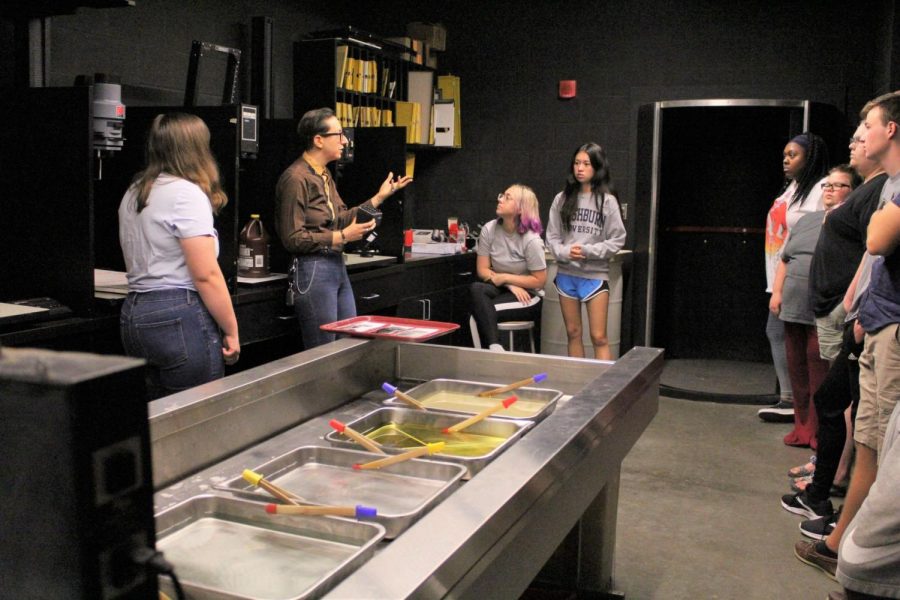Photographs capture a career path
September 6, 2019
One of the main concentrations within the art department is photography. Students within the emphasis must learn how to capture ideas while balancing their own perception.
“Sometimes people don’t initially see photography as being one of the fine arts,” said Danielle Head, assistant professor of photography. “They kind of see that the camera is just documenting something, or is more literal, like you can’t be creative with it as a medium. And I like challenging people’s ideas of what they think photography is and showing them that they can be just as expressive or communicate complex ideas or be metaphorical with photography.”
John Claybrook, fifth year art major, has discovered this sense of expression through photography and has found it to be a creative escape.
“I started with a different degree in mind, which was general art,” said Claybrook. “Then I changed to graphic design and I found myself really connected with wildlife. Also with graphic design, I decided I wanted to make some brochures for the department of wildlife but I didn’t want to use someone else’s photos. So, I decided to take my own photos…and I fell in love with it.”
Artistic expression is a passion that many within Washburn’s art department have found to be helpful in both their personal and professional lives.
“A lot of us are stressed, have anxiety, and we want a break from it. When you take a moment to look at something and see it in a different way, it gives you that break,” said Head.
Head describes that while the work is a commitment, it is also freeing.
“I usually say that maybe eight to ten hours a week outside of class for a commitment,” said Head. “For most of our classes in photography, I don’t want people to just be taking pictures of things on campus. I want them to go out into the world and take photos.”
The freeing aspect of photography is in exploration according to Head.
“Sometimes people don’t necessarily realize how much freedom they can potentially have, making imagery using either film photography or digital photography or a combination of mediums,” said Head.
As a student, Claybrook has seen the freedom that has come from learning more than just one medium of art and photography. For him, it has brought valuable life lessons throughout the years.
“A lot of what I’ve learned with the photography classes combined is its opened up my eyes to the different types of photography,” said Claybrook. “It made me more receptive to opening myself up to try new things, and I’ve found that what I thought was boring before had become more interesting because I’ve started to understand it better. It’s taking what you know about reality, removing the labels of what we see, and creating something new.”
Claybrook shared some practical advice for students seeking to pursue a degree and career in photography.
“You can’t be lazy, it’s [photography] working all the time. It’s not just gonna happen, you have to go get it and continue to work.”
Edited by Brianna Smith, Adam White, Jessica Galvin



